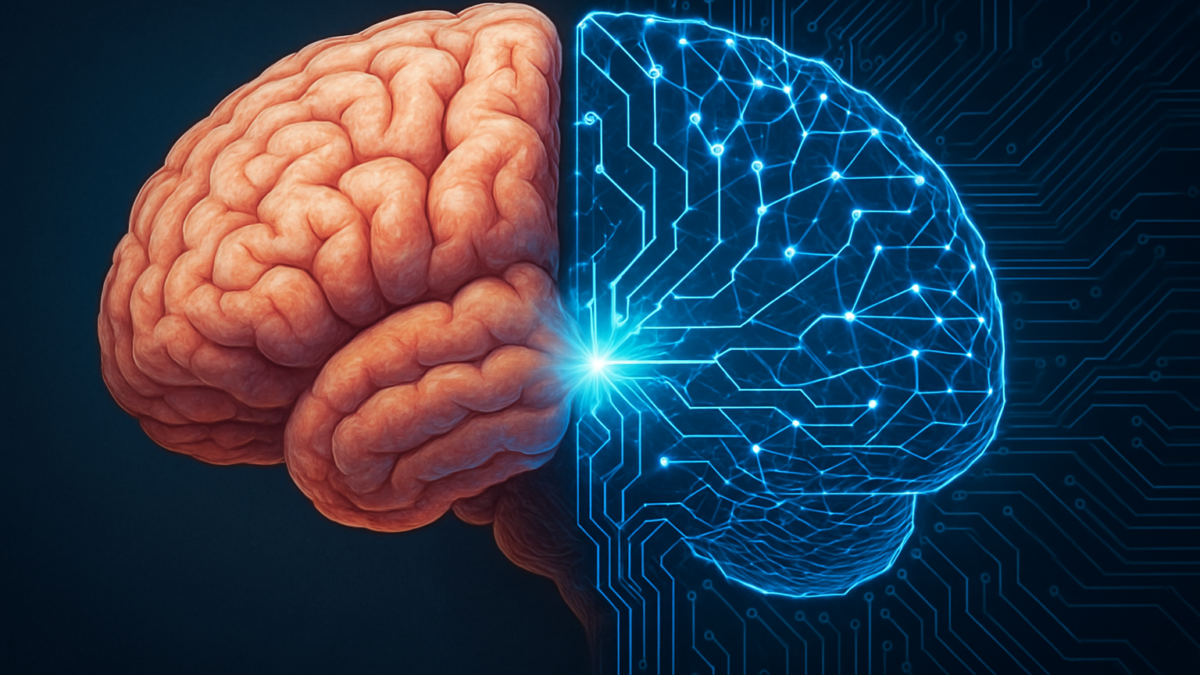Can AI Recreate the Human Brain? Exploring the Future of Synthetic Cognition
Table of Contents
Introduction
Artificial Intelligence is no longer confined to performing repetitive tasks or crunching data—it’s now inching closer to what many thought was impossible: replicating the complexity of the human brain. From deep learning systems to neural simulation research, the scientific world is actively pursuing the question: Can AI mimic human cognition—and if so, what does that mean for the future of humanity?
In this article, we’ll explore how AI is evolving to understand and simulate the human brain, the technologies driving this advancement, and what implications such breakthroughs might have in neuroscience, creativity, ethics, and beyond.
The Brain as the Blueprint
The human brain is an incredibly intricate organ. It houses over 86 billion neurons, each interconnected through trillions of synapses. Our thoughts, emotions, memories, and decisions arise from the constant firing of these neurons. Mimicking this organic network has long been the holy grail of artificial intelligence.
This effort is not purely science fiction. Projects like the Blue Brain Project (Switzerland) and Human Brain Project (EU) are actively attempting to simulate the brain’s architecture using supercomputers. Meanwhile, AI models like GPT-4 and beyond are learning how to replicate certain behaviors and responses with uncanny precision.
How AI is Mimicking Human Thinking
- Neural Networks: Artificial neural networks (ANNs) are modeled loosely after the structure of the brain. These systems use “layers” of nodes to process information much like neurons do, learning from massive datasets and adjusting their weights over time. Modern deep learning systems now have billions of parameters, enabling them to perform tasks like image recognition, speech generation, and even abstract reasoning.
- Cognitive Architectures: While neural networks excel at specific tasks, cognitive architectures like ACT-R and SOAR are attempting to model broader aspects of human cognition—such as attention span, decision-making, and working memory. These platforms try to simulate how we reason, not just the outcomes.
- Neuroscience + AI Fusion: Neuroscientists and AI researchers are increasingly collaborating to reverse-engineer the brain. Brain scans (like fMRI) are being used to train AI models to predict thoughts or even generate images seen by test subjects. Some AI models can now decode brain activity into language, creating real-time text interpretations of internal thoughts.
Could AI Eventually Replicate Consciousness?
This is where the debate intensifies. Replicating intelligence is one thing, but can AI mimic consciousness, emotion, and awareness?
Researchers suggest that AI might eventually develop synthetic consciousness—systems that are not just reactive, but self-aware. But this raises philosophical and ethical questions. If an AI becomes conscious, does it deserve rights? What happens when machines not only think like us—but feel like us?
While most current AI, including advanced chatbots and voice assistants, lack true understanding or emotional depth, the speed of progress is accelerating. Some experts predict that artificial general intelligence (AGI)—machines that can perform any intellectual task a human can—may emerge by the 2040s.
Real-World Impacts of Brain-Like AI
Whether or not we reach full brain emulation, the advances being made today are already having enormous effects on:
- Healthcare & Brain Research: AI is helping researchers map brain diseases like Alzheimer’s and Parkinson’s, detect neurological disorders early, and even simulate how a diseased brain might respond to treatments.
- Mental Health & Emotional AI: AI systems can analyze voice tones, facial cues, and language patterns to detect depression, anxiety, or stress levels. Emotion-aware machines are already being used in therapy chatbots, elder care, and digital companionship tools.
- Brain-Machine Interfaces: Companies like Neuralink are developing brain-computer interfaces that allow users to control devices with their thoughts. This could open doors for the paralyzed to regain mobility—or even allow memory uploads in the distant future.
- Education & Personalized Learning: AI tools are increasingly capable of understanding how a student learns and adjusting teaching methods accordingly. Imagine AI tutors that adapt in real time, mirroring the brain’s learning curve.
The Road Ahead: A Human-AI Hybrid?
We may not be far from a future where AI and human cognition merge, either through augmentation (brain chips, wearable neural devices) or software-based emulation. Some futurists envision a post-biological era where humans can transfer their consciousness into synthetic brains—achieving a form of digital immortality.
At the same time, caution is critical. The power to simulate and manipulate cognition raises ethical concerns around privacy, manipulation, digital identity, and AI rights.
Final Thoughts
The pursuit of replicating the human brain with AI is one of the boldest scientific undertakings of our time. While we’re still far from building a machine with true human-like consciousness, the path we’re on suggests that parts of the brain may eventually be recreated, simulated, and enhanced using artificial intelligence.
The real question isn’t just can we do it—but should we?
As AI continues to evolve from tool to collaborator, the boundary between machine and mind will only become more blurred. The future might just belong to both.
You May Also Like: Bakery Travel: The New Foodie Obsession Among Gen Z





